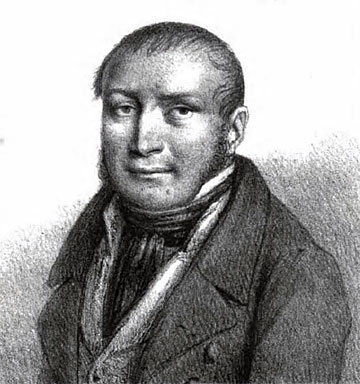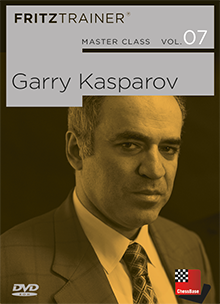Why bother to bone up on Steinitz? (1/2)
IM Craig Pritchett explains why we should all study the 19th Century Greats
The modern game wouldn’t be remotely what is today if it hadn’t been for the greatest achievements of past giants. As a young teen, I devoured innumerable books on great players of the historical past and I am absolutely certain that it improved my game vastly. Alekhine (1892-1946), that great combinative genius, was my first hero. Capablanca’s (1888-1941) languid, near effortless strategic virtuosity also hugely impressed.
I was, of course, also completely bowled over by the more recent Soviet greats, Botvinnik, Smyslov, Tal, Petrosian and Spassky, to name only the world champions, and then by Bobby Fischer’s breathtaking genius going into the 1960s. But throughout, I never ceased to draw inspiration from Alekhine and co. too, stretching all the way back to Philidor in the late 18th century. When I also discovered that Fischer was not just a keen student of 1950s and 60s Soviet chess literature, but that he had also studied many of the old 19th century classics, that clinched it. History helps!
Fischer indeed borrowed and developed many an opening idea from Steinitz and Emanuel Lasker (1868-1942), such as, for example, but not just, in the Spanish Opening: d3 Systems and the Spanish Exchange. Adolf Anderssen (1818-1879) was another great influence. Downplaying a compliment by Svetozar Gligoric, in an interview for Chess Life & Review, about his ‘new’ handling of a line in an ...e6 variation of the Sicilian Defence, which he played in the decisive, final game of his 1972 world championship match, Fischer revealed that he had simply “found the idea [...] in Anderssen’s book” (Gottschall’s 1912 biography), adding, “it’s the way they used to play in the old days.”
Doubters might usefully refer to three games played by Anderssen in his match (London 1861) against Ignaz Kolisch (1837-1889). Anderssen, who won that match narrowly (+4 =2 -3), was one of the two greatest mid-century giants – the other was Paul Morphy (1837-1884) – who bestrode chess in the 1850s and 60s, before Steinitz began to make his own impressive mark (from the late 1860s/early 1870s). All three were, for a time, effectively ‘world champion’ by repute. Morphy and Anderssen had both died by the time Steinitz defeated Johannes Zukertort (1842-1888), in the first ever match for the first, formally recognised ‘title’, in 1886.
Why were these three such stand-out ‘giants’? Taken together, Morphy and Anderssen, are commonly held to have raised the art of direct, combinative attack in the old, 1 e4 gambits, especially the King’s and Evans’ Gambits, and other so-called, 1 e4 ‘Open Games’, to its mid-19th century apogee. This style of play was marked primarily by sharply tactical attempts to get at and overwhelm opponents’ kings fast. Prior to these two, Louis-Charles de la Bourdonnais (1795-1840), had set the early bar for such play in the 1830s, as, for example, against Alexander McDonnell in Game 16 (4th match, London 1834), part of an epic, 85-game summer series, won by de la Bourdonnais (+45 -27 =13).

French chess master Louis-Charles Mahé de La Bourdonnais (1795–1840) was possibly the strongest player in the early 19th century.

[Event "London m4"] [Site "London"] [Date "1834.??.??"] [Round "16"] [White "McDonnell, Alexander"] [Black "De Labourdonnais, Louis Charles Mahe"] [Result "0-1"] [ECO "B32"] [Annotator "Craig Pritchett"] [PlyCount "74"] [EventDate "1834.??.??"] [EventType "match"] [EventRounds "18"] [EventCountry "ENG"] [SourceTitle "EXT 2002"] [Source "ChessBase"] [SourceDate "2001.11.25"] 1. e4 c5 2. Nf3 Nc6 3. d4 cxd4 4. Nxd4 e5 5. Nxc6 bxc6 6. Bc4 Nf6 7. Bg5 Be7 8. Qe2 d5 9. Bxf6 Bxf6 10. Bb3 O-O 11. O-O a5 12. exd5 cxd5 13. Rd1 d4 14. c4 $6 { White has not played the opening with any bite. By allowing Black to obtain a powerful, passed d-pawn for no clear compensation in a lame-duck queenside pawn majority, however, he now courts long-term danger.} (14. Nd2 {, or perhaps }) (14. a4 {, and if} Bb7 15. Nd2 {, both put up more of a fight}) 14... Qb6 15. Bc2 Bb7 16. Nd2 Rae8 17. Ne4 Bd8 18. c5 Qc6 19. f3 Be7 20. Rac1 f5 $5 { [#] Black's central pawns start to roll forward with real menace. The slower, more circumspect} (20... Rc8 {might, however, have improved}) 21. Qc4+ Kh8 22. Ba4 $5 {White insists on grabbing Black's offered exchange. The engines, however, suggest that White might instead hope to equalise by playing} (22. Nd6 {, and if} Bxd6 23. Ba4 $1 Qxc5 24. Qxc5 Bxc5 25. Rxc5 ({or possibly} 25. Bxe8) ) 22... Qh6 23. Bxe8 $5 ({After} 23. Nd6 $5 {, and if} Bxd6 24. Bxe8 Bc7 25. c6 e4 {, Black has at least a draw by perpetual check in hand in virtually all lines.}) 23... fxe4 24. c6 exf3 25. Rc2 Qe3+ 26. Kh1 $2 {[#]} ({Here, however, White misses his only apparent saving move} 26. Rf2 $1 {, and if} fxg2 27. Qe2 {, which may even be better for him. Now though, Black's three advanced pawns magnificently triumph.}) 26... Bc8 27. Bd7 f2 28. Rf1 d3 29. Rc3 Bxd7 30. cxd7 e4 31. Qc8 Bd8 32. Qc4 Qe1 33. Rc1 d2 34. Qc5 Rg8 35. Rd1 e3 36. Qc3 Qxd1 37. Rxd1 e2 {[#]} 0-1
This is a wonderful game, of course, but objectively somewhat uneven. In the next two or three decades, as chess knowledge grew, defences especially improved; and it no longer became quite so easy (or de rigueur) to seek to launch such (possibly over-ambitious) attacks with thoughts of continued success. Much more than his peers, Steinitz successfully seized on this Zeitgeist in mid-century, eventually taking the game forward into a much more nuanced, strategically based future.
Above all, Steinitz insisted that all chess games begin in a state of broad balance. From this central idea, he drew the not unnatural conclusion that the successful player (in games between peers) must therefore seek first to alter that balance, in his or her favour, before launching any all-out attacks, or risk punishment. This crucial thought was not just intrinsic to Steinitz’s game. It has also since become an accepted modern mantra.
In Steinitz’s day, it provided a particular impetus towards a much more sophisticated understanding of the significance of weak and strong pawn structures, strong and weak points, outposts and holes, planning and the manoeuvring arts, and the adoption of a wider range of Closed and Semi-Closed Games (in addition to the Open Games). It is, however, important to be clear that this ‘new’ thinking did not signal the end of tactics and imaginative, combinative attacks, merely a modern reset.
Through the 1870s and 1880s, Steinitz rightly considered himself to be in the vanguard of the development of what he termed a new ‘modern’ school, which included all of the above-mentioned principles and which was rooted in an equally distinctive ‘Steinitzian’ ethic of unceasing innovation, hard work and objective research. He contrasted this with what he termed the ‘old’ school, by which he meant the more swashbuckling, essentially open attacking style of the earlier 19th century, which typified what came to be known as the game’s ‘Romantic Age’.
Let’s unpack this a little, based on a clash between Kolisch, a player who Steinitz considered essentially ‘old’ school, and Louis Paulsen (1833-1891), whom he admired as an early ‘pioneer’ of the ‘modern’. Compared to the Bourdonnais game, it is immediately apparent that something quite different and much more heavyweight is afoot. Both players clearly have a more sophisticated grasp of the opening and come to the board with a depth of knowledge and preparation that is far in advance of their 1830s peers. Bourdonnais and his contemporaries no doubt worked as hard, both on and off the board, but chess had moved on and lost much of its earlier ‘innocence’.

Louis Paulsen (1833–1891) was one of the first players to have a recognisably ‘modern’ style and was admired by Steinitz for that.

[Event "BCA-04.Kongress"] [Site "Bristol"] [Date "1861.09.14"] [Round "1.3"] [White "Kolisch, Ignatz"] [Black "Paulsen, Louis"] [Result "0-1"] [ECO "C51"] [Annotator "Pritchett,Craig"] [PlyCount "56"] [EventDate "1861.09.10"] [EventType "k.o."] [EventRounds "3"] [EventCountry "ENG"] [SourceTitle "EXT 2002"] [Source "ChessBase"] [SourceDate "2001.11.25"] 1. e4 e5 2. Nf3 Nc6 3. Bc4 Bc5 4. b4 Bxb4 5. c3 Ba5 6. d4 exd4 7. O-O d6 8. cxd4 Bb6 9. d5 Na5 10. Bb2 Ne7 11. Bd3 O-O 12. Nc3 Ng6 13. Ne2 c5 14. Qd2 f6 { [#] Black's clever combination of his 9th, 13th and 14th moves, was an apparent novelty. It certainly wrong-foots Kolisch. By maintaining a firm grip on e5, Black buys time to activate his queenside forces, although White retains compensation for the gambit pawn due to his control of extra space and potential for attack on the kingside.} 15. Kh1 Bd7 $5 ({Later games established } 15... Bc7 {and if} 16. Rac1 Rb8 17. Ng3 b5 {as the critical challenge, despite the course of Anderssen,A-Zukertort,J, Barmen 1869, which continued} 18. Nf5 b4 19. Rg1 Bb6 20. g4 Ne5 21. Bxe5 dxe5 $6 (21... fxe5 {improves}) 22. Rg3 Rf7 23. g5 Bxf5 24. exf5 Qxd5 $2 {and after this and Black's next, White wins} 25. gxf6 Rd8 $6 26. Rcg1 Kh8 27. fxg7+ Kg8 28. Qh6 Qd6 29. Qxh7+ { 1-0 Anderssen,A-Zukertort,J/Barmen 1869/EXT 2002}) 16. Rac1 a6 17. Ne1 $6 ({ White starts to drift. My trusty 1891 'Handbuch des Schachspiels', in its many successful editions the 19th century 'bible' of opening theory, suggests that after} 17. Ng3 Bb5 18. Nf5 c4 19. Be2 {White may have slightly the better chances.}) 17... Bb5 18. f4 $6 ({It was still better to play} 18. Ng3 {Black can now return the gambit pawn in return for the bishop pair and a comfortable positional advantage.}) 18... c4 19. Bb1 c3 $1 {[#]} 20. Rxc3 ({Or if} 20. Bxc3 Nc4 21. Qc2 Ne3 {and wins}) 20... Nc4 21. Qc1 Rc8 $6 ({Black should, however, probably have been satisfied with} 21... Nxb2 22. Qxb2 Re8 {was much better. White might now have avoided the worst, by playing instead of the game continuation ...}) 22. Bd3 $2 ({...} 22. a4 $1 {, and if} Nxb2 ({or if} 22... Ne3 $6 23. axb5 Nxf1 24. Nc2 {winning Black's knight}) 23. axb5 $1 Rxc3 24. Nxc3 ({or perhaps} 24. Qxc3 Nd1 {, and if} 25. Qg3 Ne3 26. Rf3 Nc4) 24... Nc4 { with continuing defensive chances}) 22... Be3 23. Qc2 Nd2 {[#]This fine move wins an exchange.} 24. Rg1 Rxc3 25. Qxc3 ({Or if} 25. Bxc3 Bxg1 26. Kxg1 Nc4 27. a4 Ne3 28. Qc1 Bxd3 29. Nxd3 Ng4) 25... Qb6 26. Bc1 Bxg1 27. Nxg1 Bxd3 28. Nxd3 $6 {Resignation but Black must also win after} (28. Qxd3 Nb1 {, and if} 29. Qc2 Qa5 30. Ngf3 Nc3 31. Bd2 Rc8) 28... Nxe4 0-1
Looking back in his International Chess Magazine, July 1891, Steinitz acknowledged a huge debt to Louis Paulsen’s then a-typically slow, defensive, manoeuvring, closed, counter-punching playing style. In this, he was persuaded by discussions on that theme, at London 1862, by the two then leading lights of the ‘old’ attacking school, Anderssen and Kolisch. Steinitz learned for the first time, he wrote, “To recognise that chess genius is not confined to [...] more or less deep and brilliant finishing strokes after the original balance [...] has been overthrown, but that it also requires [...] still more extraordinary powers [...] to maintain that balance or [...] disturb it at the appropriate moment”.
This article appeared in the October 2016 of the British magazine CHESS – part two will follow soon

CHESS Magazine was established in 1935 by B.H. Wood who ran it for over fifty years. It is published each month by the London Chess Centre and is edited by IM Richard Palliser and Matt Read. The Executive Editor is Malcolm Pein, who organises the London Chess Classic.

CHESS is mailed to subscribers in over 50 countries. You can subscribe from Europe and Asia
at a specially discounted rate for first timers here, or from North America here.
ChessBase software from Chess & Bridge
 |
Master Class Volume 7: Garry Kasparov
Rogozenco, Müller, Marin & Reeh;
ChessBase PC-DVD, running time: 9 hours
RRP £24.95 SUBSCRIBERS £22.45
ChessBase’s series on the greatest players of all time moves on to tackling one who is still very much with us, the legendary 13th world champion. Kasparov may have been retired for 11 years now, but we can, of course, still learn a huge amount from his games.
As usual Müller, Marin and Reeh explore his endgame, strategic and tactical skills respectively, while Rogozenko is a welcome addition to the team as he examines one of Kasparov’s legendary strengths, his openings.
Order online from
The London Chess Centre or Chess4Less (USA) |
 |
The 4...Nf6 Caro-Kann
Nigel Davies; ChessBase PC-DVD,
running time: 4 hours
RRP £24.95 SUBSCRIBERS £22.45
The Welsh Grandmaster takes a look at the main line of the Caro-Kann, 1 e4 c6 2 d4 d5 3 Nc3 dxe4 4 Nxe4, proposing Black then plays an old favourite of his, 4...Nf6. After 5 Nxf6+ Davies examines both the Tartakower variation, 5...exf6, and the more dynamic Bronstein-Larsen line, 5...gxf6!?. As one would expect,
Davies explains the main ideas for Black, while mapping out a repertoire with both variations which should be sufficiently detailed for the club player.
Order online from
The London Chess Centre or Chess4Less (USA) |
 |
Pawn Structures You Should Know
Adrian Mikhalchishin; ChessBase PC-DVD,
running time: 5 hours, 6 minutes
RRP £24.95 SUBSCRIBERS £22.45
The experienced Slovenian, formerly Ukrainian, Grandmaster and trainer has long been a fan of Aron Nimzowitsch’s advice that one must “study typical pawn structures”. Mikhalchishin has plenty of clear examples, which help to illustrate how one should handle both sides of such common situations as the isolated pawn or the Marozcy Bind, while a number of interactive tests should serve to really drum home the lessons.
Order online from
The London Chess Centre or Chess4Less (USA) |
 |
Trompowsky for the Attacking Player
Timur Gareyev; ChessBase PC-DVD,
running time: 4 hours, 36 minutes
RRP £24.95 SUBSCRIBERS £22.45
On his early summer trip to Europe, Gareyev dropped by Hamburg, recording this DVD on one of his all-time favourite openings. As one might expect, there is plenty of creative, sharp chess to be found in this Trompowsky repertoire, with gambits very much to the fore. That said, Gareyev does also show how to handle Black’s more solid defences while drawing heavily on his own praxis throughout.
Order online from
The London Chess Centre or Chess4Less (USA) |
































